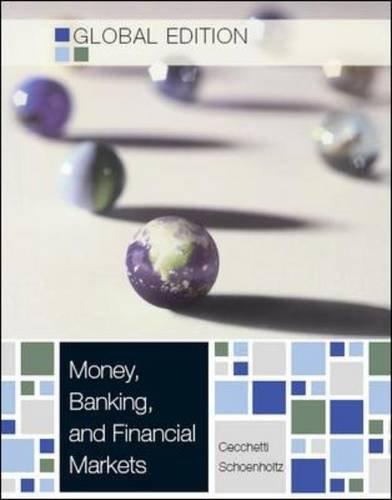Question
1) An under-investment problem suggests that shareholders choose to not invest in a ________ project. A) zero-NPV B) negative-NPV C) positive-NPV D) none of the
1) An under-investment problem suggests that shareholders choose to not invest in a ________ project.
A) zero-NPV
B) negative-NPV
C) positive-NPV
D) none of the above
2) The agency costs are the costs that arise when there are conflicts of interest:
A) between management and shareholders
B) between customers and suppliers
C) between stakeholders
D) between the board of directors and shareholders
3) The tradeoff theory weighs ________ of debt that result from shielding cash flows from taxes against the costs of financial distress associated with leverage.
A) the benefits
B) the costs
C) the interests
D) the terms
4) An over-investment problem means that shareholders have an incentive to invest in risky ________ projects.
A) positive-NPV
B) negative-NPV
C) zero-NPV
D) none of the above
5) Which of the following statements is false?
A) The agency costs of debt can arise only if there is no chance the firm will default and impose losses on its debt holders.
B) Agency costs represent another cost of increasing the firm's leverage that will affect the firm's optimal capital structure choice.
C) An under-investment problem occurs when shareholders choose to not invest in a positive-NPV project.
D) When a firm faces financial distress, it may choose not to finance new, positive-NPV projects.
Answer: Explanation:
Use the information for the question(s) below.
JR Industries has a $20 million loan due at the end of the year and under its current business strategy its assets will have a market value of only $15 million when the loan comes due. JR is considering a new, much riskier business strategy. While this new, riskier strategy can be implemented using JR's existing assets without any additional investment, the new strategy has only a 40% probability of succeeding. If the new strategy is a success, the market value of JR's assets will be $30 million, but if the strategy fails the assets will be worth only $5 million.
6) What is the overall expected payoff under JR's new riskier business strategy?
A) $4 million
B) $11 million
C) $20 million
D) $15 million
Answer: Explanation:
7) What is the expected payoff to debt holders under JR's new riskier business strategy?
A) $20 million
B) $4 million
C) $15 million
D) $11 million
Answer: Explanation:
8) What is the expected payoff to equity holders under JR's new riskier business strategy?
A) $15 million
B) $11 million
C) $20 million
D) $4 million
Answer: Explanation:
Step by Step Solution
There are 3 Steps involved in it
Step: 1

Get Instant Access to Expert-Tailored Solutions
See step-by-step solutions with expert insights and AI powered tools for academic success
Step: 2

Step: 3

Ace Your Homework with AI
Get the answers you need in no time with our AI-driven, step-by-step assistance
Get Started


